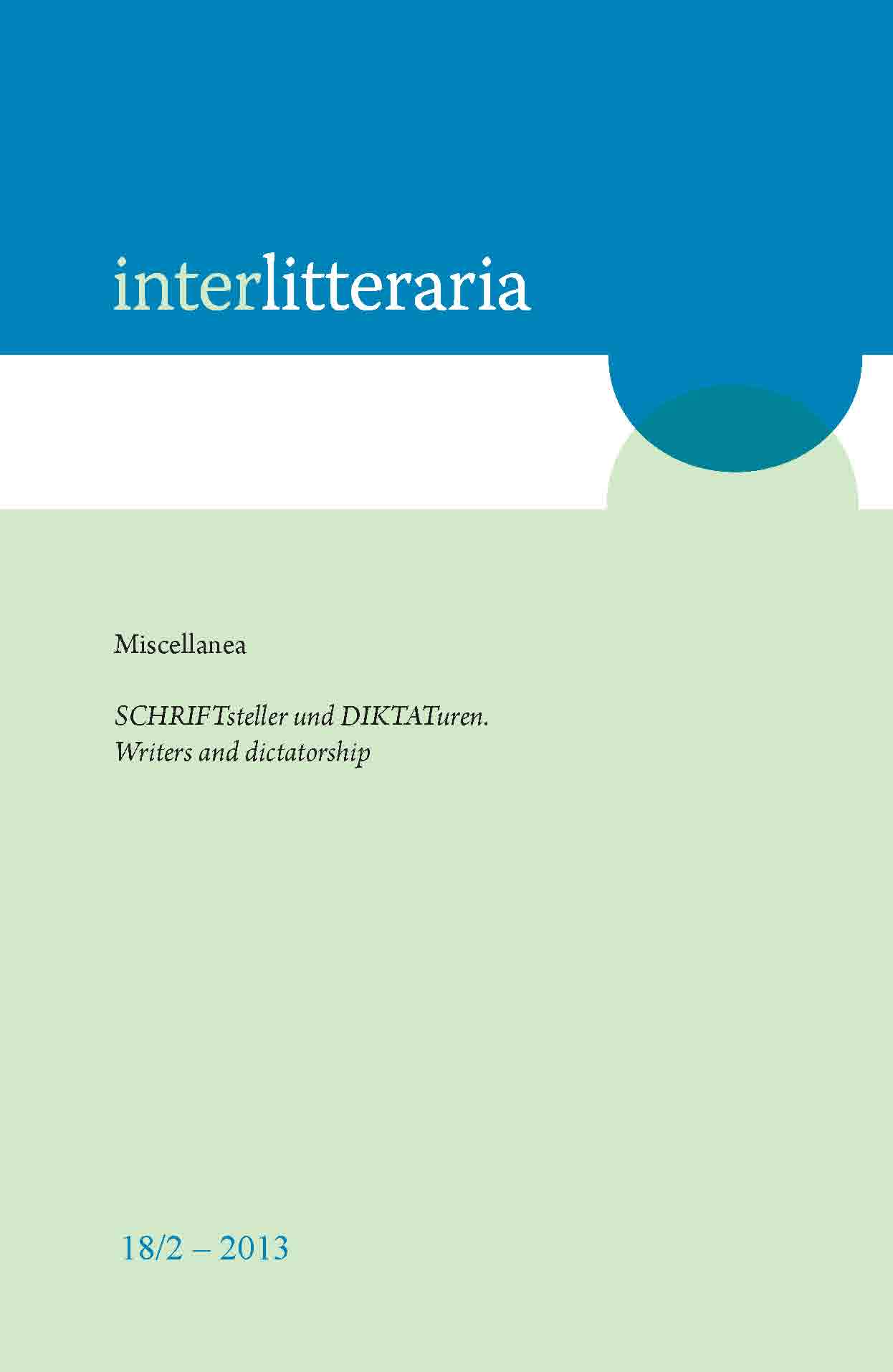Die Finsternis der Vergangenheit in Ene Mihkelsons Roman Katkuhaud (Pestgrab, 2007)
DOI:
https://doi.org/10.12697/IL.2013.18.2.17Keywords:
remembering, excavating the past, Post-Soviet literature, contemporary literature, Bronze Soldier, Ene Mihkelson, Estonian literature, partisan movement, metaphors of remembranceAbstract
The Eclipse of the Past in Ene Mihkelson’s novel Katkuhaud (The Plague Grave, 2007). The latest novel Katkuhaud of Ene Mihkelson picks up the image of the Bronze Soldier to illustrate the complex problem of remembering the (Soviet) past in Estonia. Katkuhaud was published at the beginning of May 2007, only a few weeks after the removal of a Soviet monument, the so-called Bronze Soldier, and the street riots accompanying this. The novel begins with the description of this monument in the Tallinn city centre being surrounded with the police barrier tape. The Bronze Soldier was erected in September 1947 as a monument to the fallen Soviet soldiers who “liberated” Tallinn in 1945 from the German occupation. In the Estonian version of events this was not liberation but re-occupation. Mihkelson’s novel deals with remembering and coming to terms with the past on a personal, national and international level. In Estonia and in some other Eastern European countries the end of the Second World War and the defeat of the Nazi Germany did not mean a new beginning but more Stalinist repressions. In their case the Aufarbeitung, dealing with and making sense of the past, is rather belated. The novel is especially concerned with the problem of remembering and the different personal narratives this involves. The symbolism of the police tape at the beginning of the book develops into a metaphor for internal and external darkness, the incurable national dysfunction, the legacy of the Soviet past.Downloads
Download data is not yet available.
References
<div class="WordSection1"><p>Assmann, A. 2006. <em>Der lange Schatten der Vergangenheit. Erinnerungskultur und Geschichtspolitik</em>. München: C. H. Beck.</p><p>Bachtin, М. 1975. Slova v romane. – M. Bachtin, <em>Voprosy literatury i ėstetiki</em>. Moskau: Hudožestvennaja literatura, 72–234.</p><p>Bar-On, D. 2003. <em>Die Last des Schweigens. Gespräche mit Kindern von NS-Tätern</em>. Hamburg: Edition Körber Stiftung.</p><p>Hasselblatt, C. 2006. <em>Geschichte</em><em> </em><em>der</em><em> </em><em>estnischen</em><em> </em><em>Literatur:</em><em> </em><em>von den Anfängen bis zur Gegenwart</em>. Berlin-New York: de Gruyter.</p><p>Jaanus, M. 2012. Katsetus Ene Mihkelsoni ja W. G. Sebaldi teemal – <em>Vikerkaar</em>, 12, 45–75.</p><p>Kaasik, P. 2006. Tallinnas Tõnismäel asuv Punaarmeelaste ühishaud ja mälestusmärk. – <em>Akadeemia</em>, 9, 1891–1918.</p><p>Kaplinski, J., Kross, J., Rummo P.-E. 2004. Resistance, scepticism and homo. – J.-J. Subrenat, Hg., <em>Estonia: identity and independence</em>. Amsterdam-New York: Rodopi, 153–166.</p><p>Laanes, E. 2009. <em>Lepitamatud</em><em> </em><em>dialoogid:</em><em> </em><em>subjekt</em><em> </em><em>ja mälu nõukogudejärgses eesti romaanis. </em>Tallinn: Underi ja Tuglase Kirjanduskeskus.</p></div><p>Langer, L. L. 1993. <em>Holocaust Testimonies: The Ruins of Memory. </em>New Haven: Yale University Press.</p><p>Leggewie, C., Lang, A. 2011. <em>Der</em><em> </em><em>Kampf</em><em> </em><em>um</em><em> </em><em>die</em><em> </em><em>europäische</em><em> </em><em>Erinnerung.</em><em> </em><em>Ein</em><em> </em><em>Schlachtfeld</em><em> </em><em>wird besichtigt</em>. München: Verlag C. H. Beck.</p><p>Liiv, J. 1969. <em>Väike luuleraamat. Juhan Liiv</em>. Tallinn: Eesti Raamat. Luik, V. 1991. <em>Ajaloo ilu. </em>Tallinn: Eesti Raamat.</p><p>Mihkelson, E. 2007. <em>Katkuhaud</em>. Tallinn: Varrak.</p><p>Niklus, M.-O. 2004. Homo soveticusest eesti inimeseni. – <em>Kultuur ja Elu</em>, 3, 64–66.</p><p>Sakova, A. 2006. Et olla õnnelik, peab olema ärkvel. Intervjuu Herderi preemia laureaadi Ene Mihkelsoniga. – <em>Sirp</em>, 12.05.</p><p>Sarapik, V. 2005. Võõras mets: Ene Mihkelsoni proosast. – <em>Keel ja Kirjandus</em>, 9–10, 728–734, 808–817.</p><p>Selart, A., Hg. 2012. <em>Eesti ajalugu II. Eesti keskaeg. </em>Tartu: Tartu Ülikool.</p><p>Seljamaa, E.-H. 2012. <em>A Home for 121 Nationalities or Less: Nationalism, Ethnicity, and Integration in Post-Soviet Estonia. Dissertation at the Ohio State University</em>. Ohio State University.</p><p>Tamm, M., Halla, S. 2008. Ajalugu, poliitika, identiteet: Eesti monumentaalsest mälumaastikust. – M. Tamm, P. Petersoo, Hg., <em>Monumentaalne konflikt: mälu, poliitika ja identiteet tänapäeva Eestis</em>. Tallinn: Varrak, 18–50.</p><p>Wolf, C. 1999. <em>Kindheitsmuster</em>. München: Luchterhand.</p>
Downloads
Published
2013-12-20
Issue
Section
Articles
License
The contents of Interlitteraria are published under CC BY-NC-ND licence.


